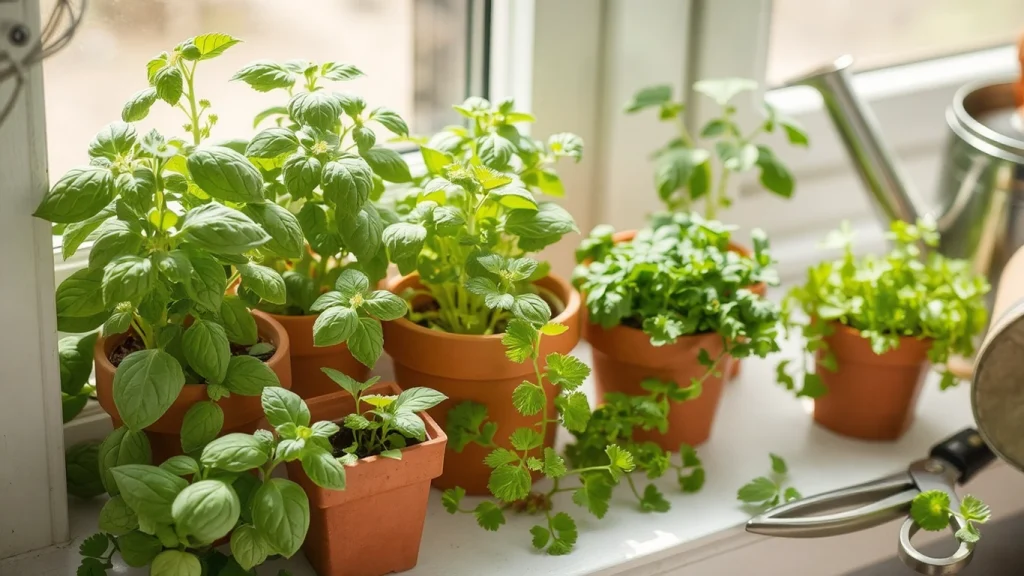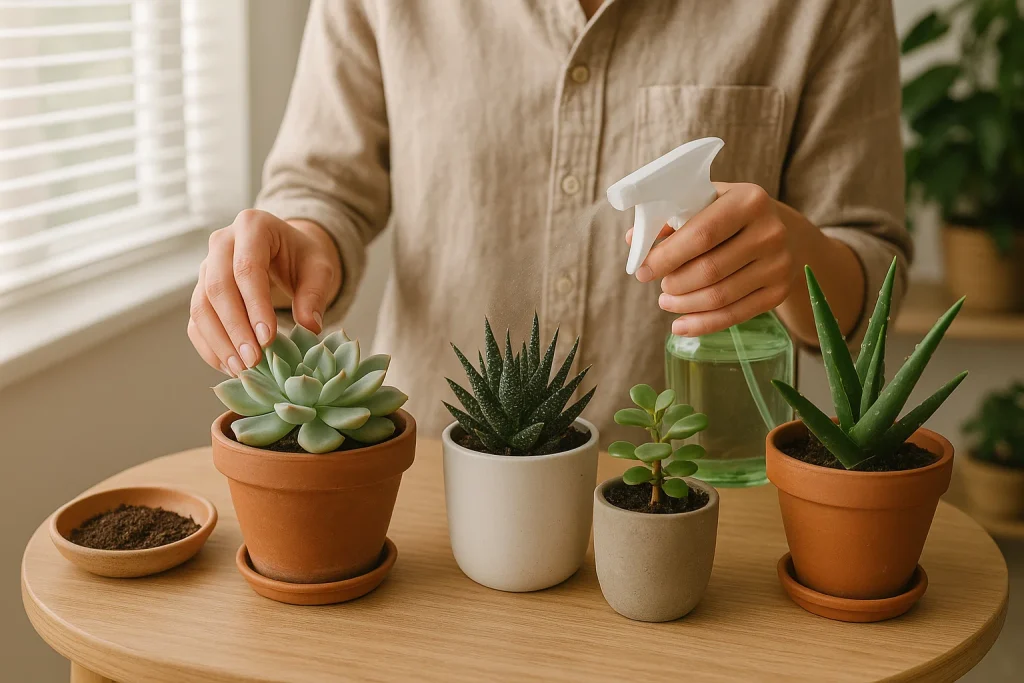10 Beginner Tips for Thriving Snake Plants
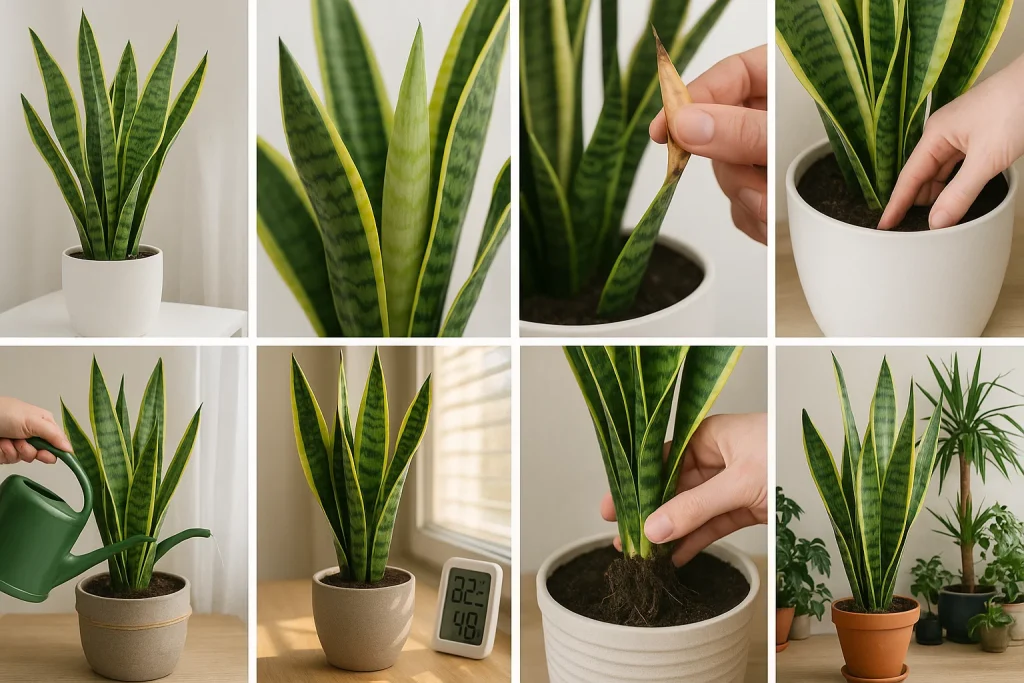
Snake plants (Sansevieria), also known as mother-in-law’s tongue, are among the easiest houseplants to care for, making them perfect for beginners. With their attractive, upright leaves and low maintenance requirements, snake plants can thrive in a variety of conditions, adapting to your living space with ease. Follow these 10 beginner tips to ensure your snake plant stays healthy and vibrant.
1. Choose the Right Pot
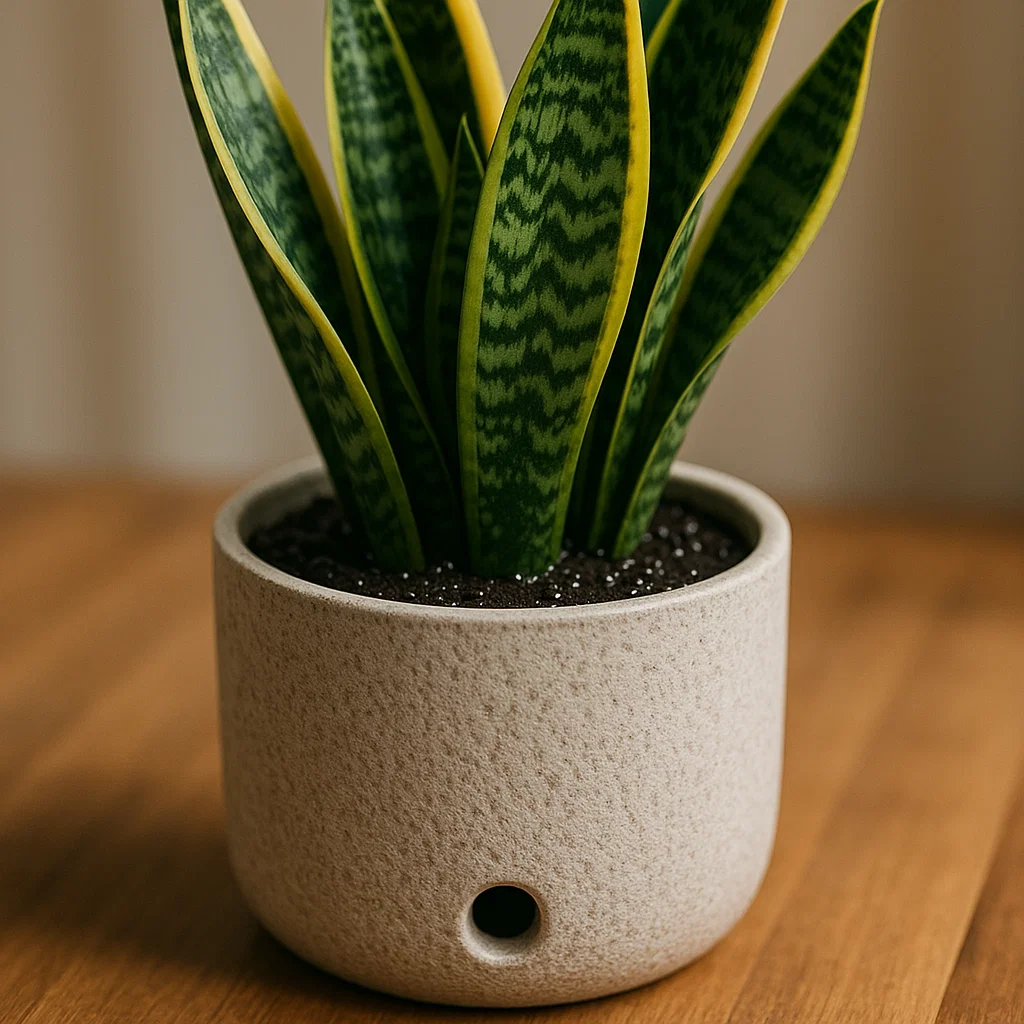
Start by selecting a pot with proper drainage. Snake plants prefer to dry out between waterings, so a pot with a drainage hole helps prevent root rot. Opt for a slightly larger pot to give the roots enough room to grow.
Why it works: A pot with drainage helps prevent water from accumulating at the bottom, reducing the risk of root rot and promoting healthy growth.
2. Find the Right Light
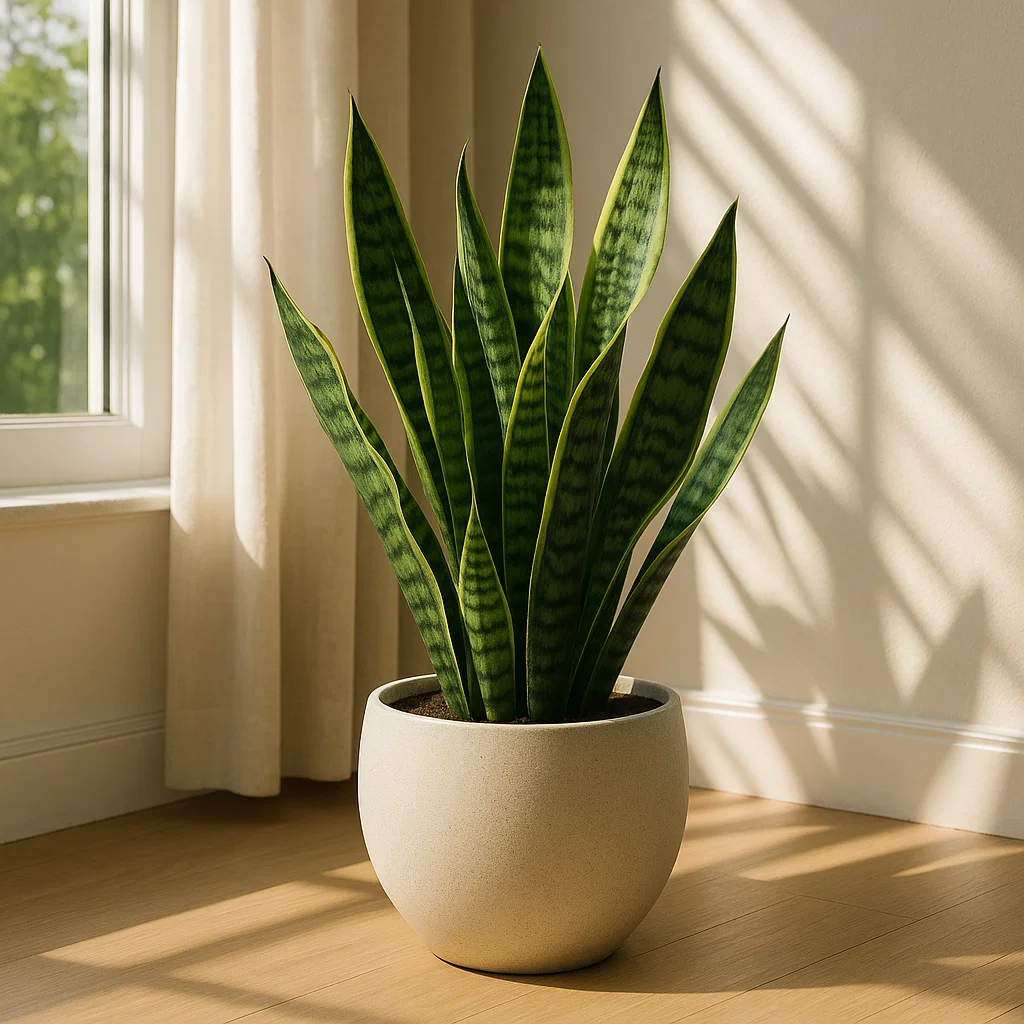
Snake plants can tolerate a range of lighting conditions, but they thrive in indirect light. While they can handle low light, they grow best in bright, indirect sunlight. Avoid placing them in direct sunlight for extended periods, as it can scorch their leaves.
Why it works: Indirect light ensures your plant gets enough energy to grow without causing stress from too much sun exposure.
3. Water Sparingly
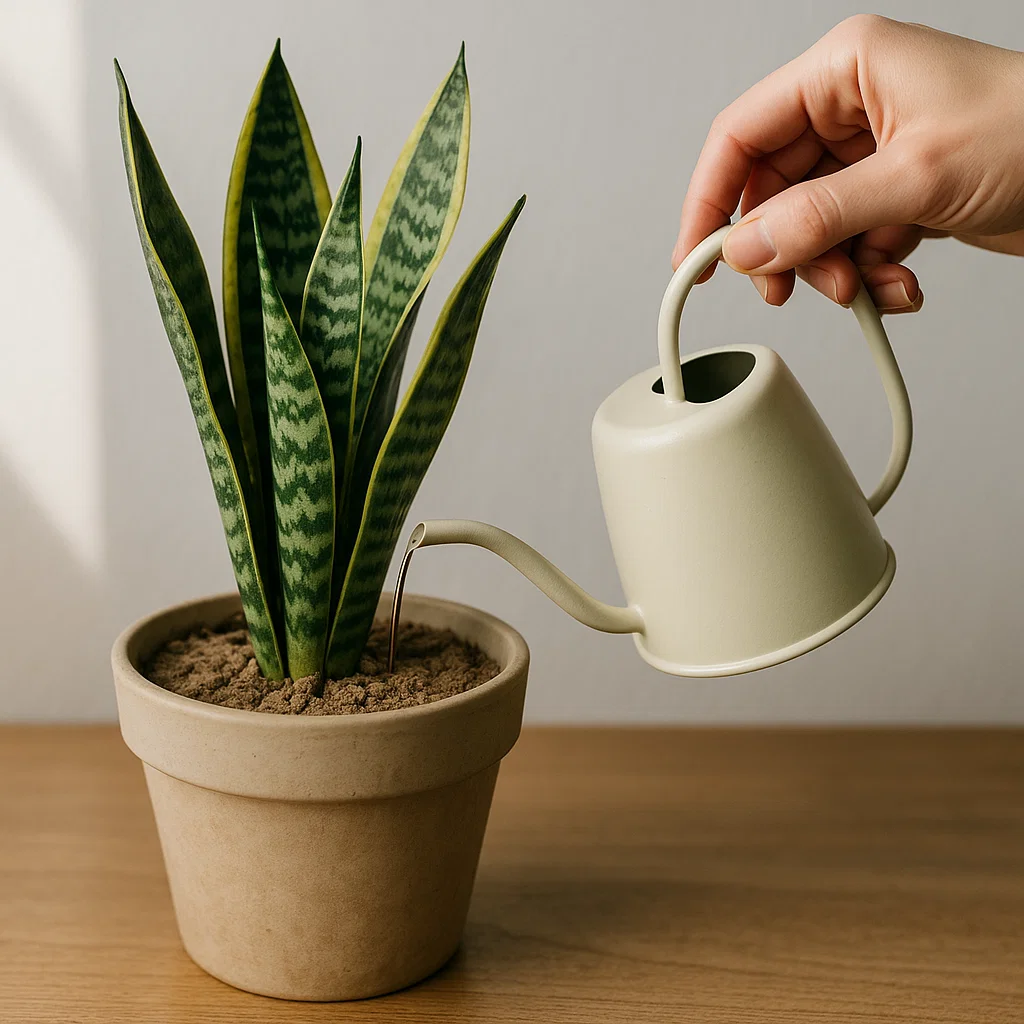
One of the most essential tips for snake plant care is to water sparingly. Let the soil dry out completely before watering again, usually every 2-3 weeks. Overwatering is the most common mistake with snake plants, leading to root rot.
Why it works: Snake plants are drought-tolerant and prefer to dry out between waterings. Too much water can suffocate the roots and cause them to rot. Signs of overwatering include yellowing leaves, soft stems, and a musty smell in the soil.
4. Use Well-Draining Soil
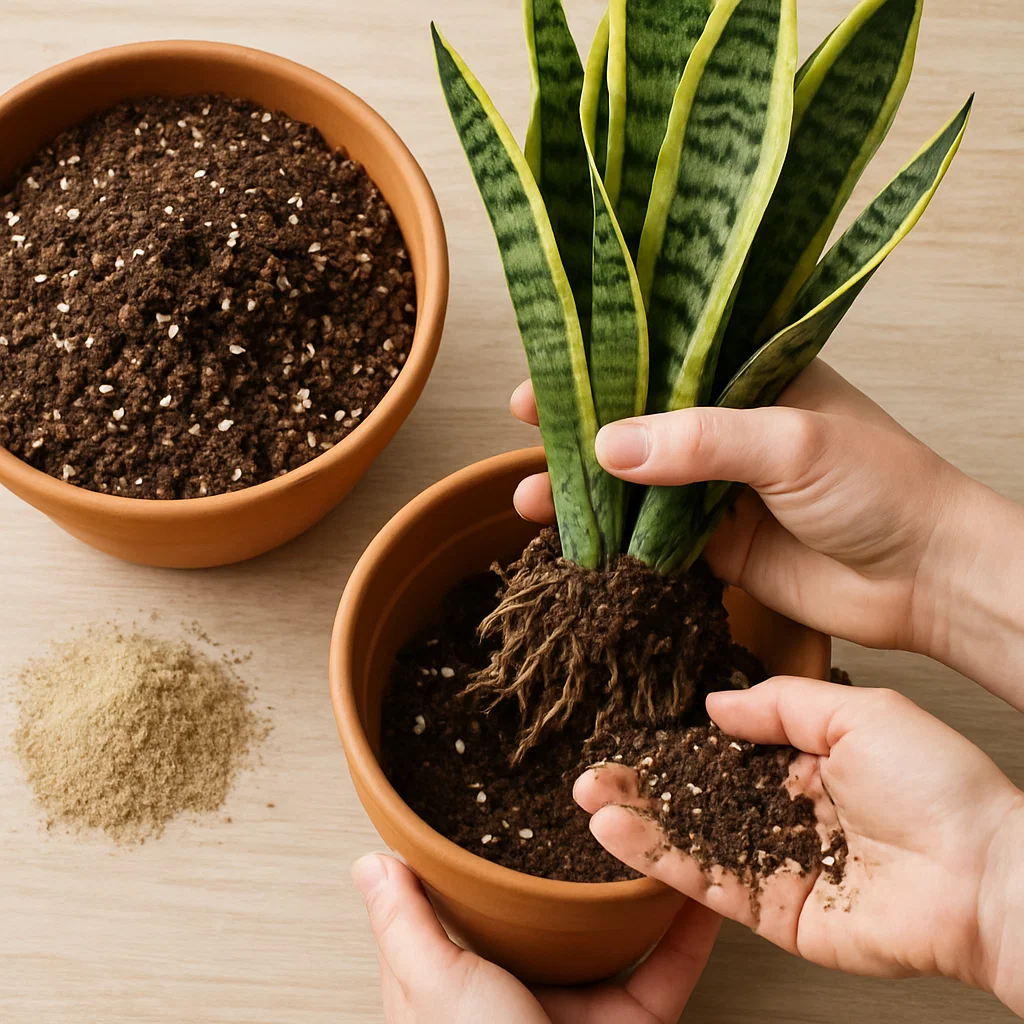
Ensure your snake plant is in well-draining cactus or succulent soil. You can also mix regular potting soil with sand or perlite to improve drainage. This will help the plant retain the proper moisture levels without becoming waterlogged.
Why it works: Well-draining soil prevents excess moisture from sitting around the roots, which helps the plant thrive in dry conditions.
5. Fertilize During Growing Season
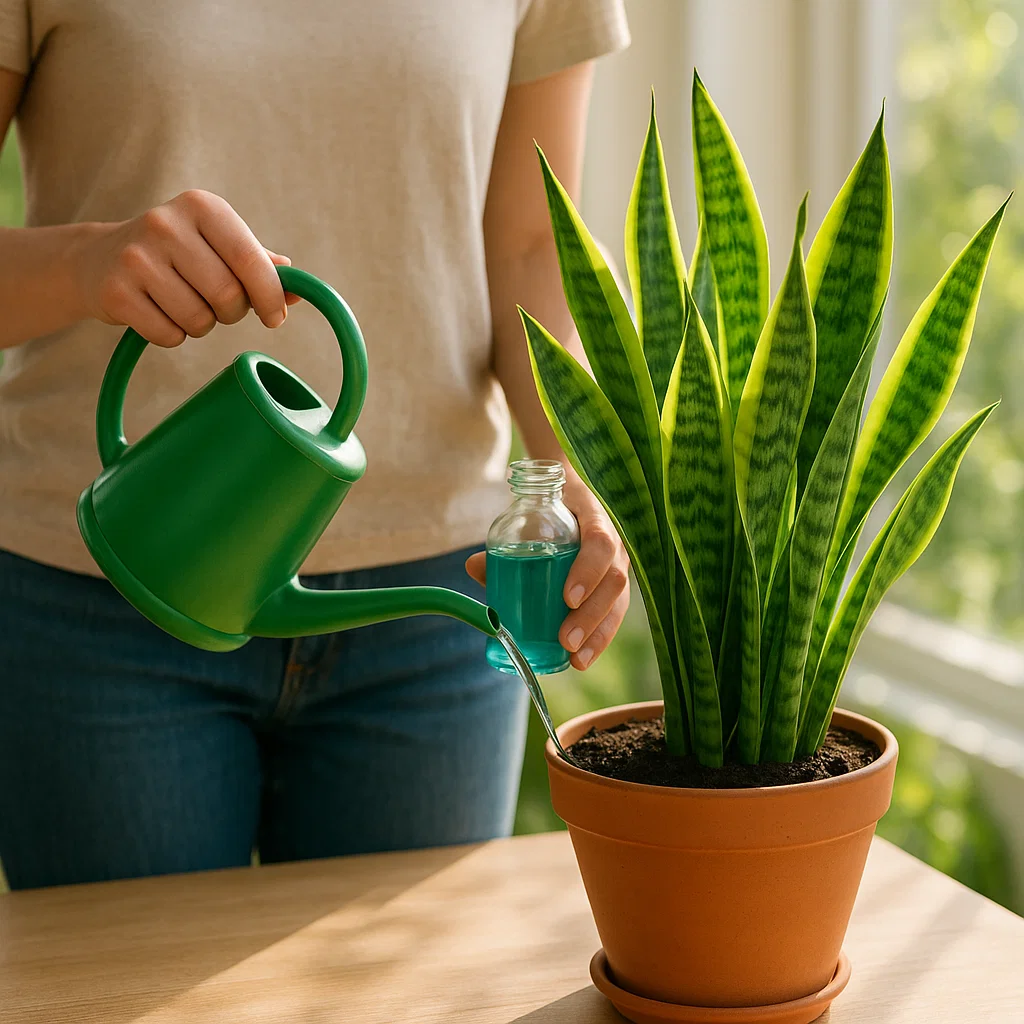
Feed your snake plant with a balanced liquid fertilizer, such as a 10-10-10 or 20-20-20, during the spring and summer months when it’s actively growing. A diluted houseplant fertilizer will provide the nutrients it needs. Avoid fertilizing in fall and winter when the plant is dormant.
Why it works: Fertilizing during the growing season supports healthy growth, while reducing feeding during dormancy prevents over-fertilization, which can lead to nutrient burn and other issues.
6. Maintain Ideal Temperature

Snake plants thrive in moderate temperatures ranging from 60°F to 85°F (15°C to 29°C). Avoid placing them near drafts, air conditioners, or heaters. They can tolerate some temperature fluctuations, but extreme cold or heat can stress the plant.
Why it works: Maintaining a consistent temperature helps the plant adapt to its environment and prevents stress that could affect its growth.
7. Repot When Necessary
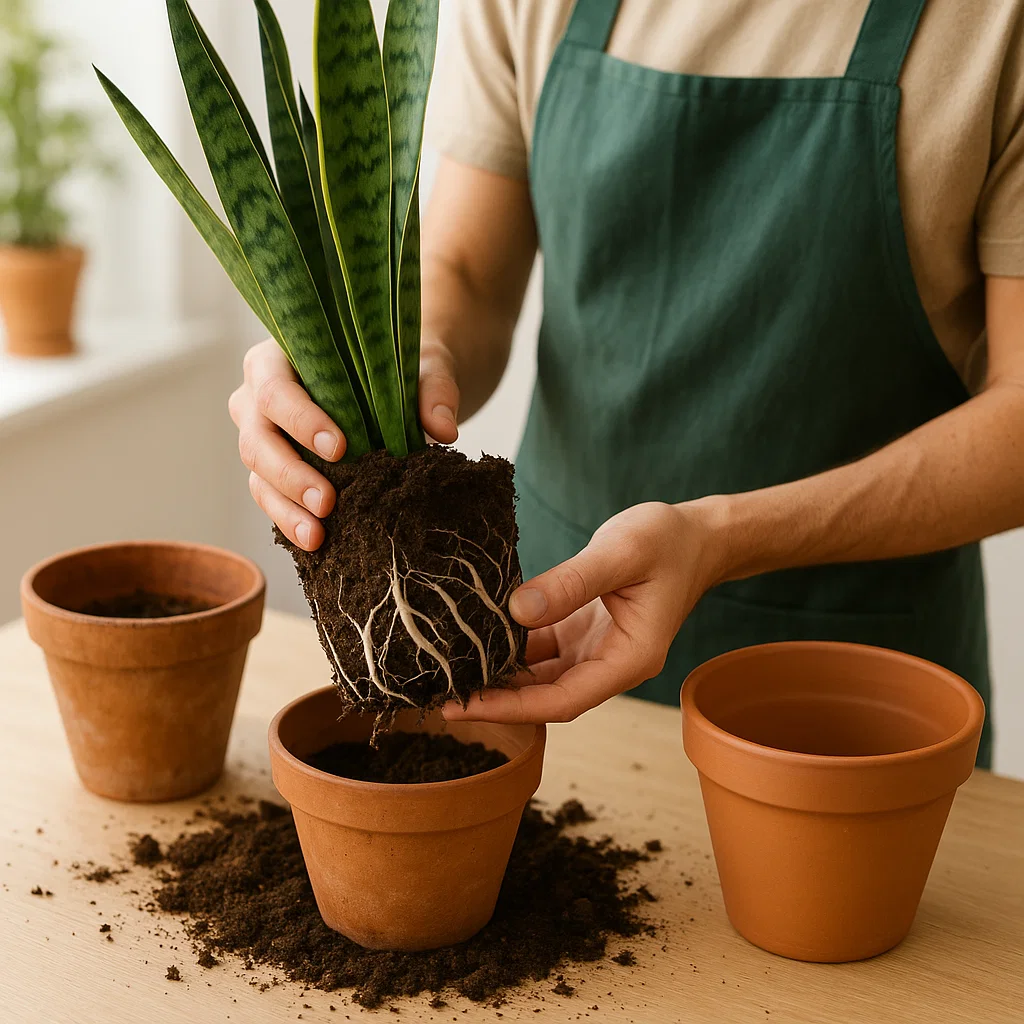
Repot your snake plant every 2-3 years or when it outgrows its pot. If the roots become crowded or the plant appears top-heavy, it’s time for a new pot. Choose a pot that is only slightly larger than the current one to avoid overwatering.
Why it works: Repotting provides room for the plant to grow and ensures the roots have enough space to absorb water and nutrients.
8. Check for Pests
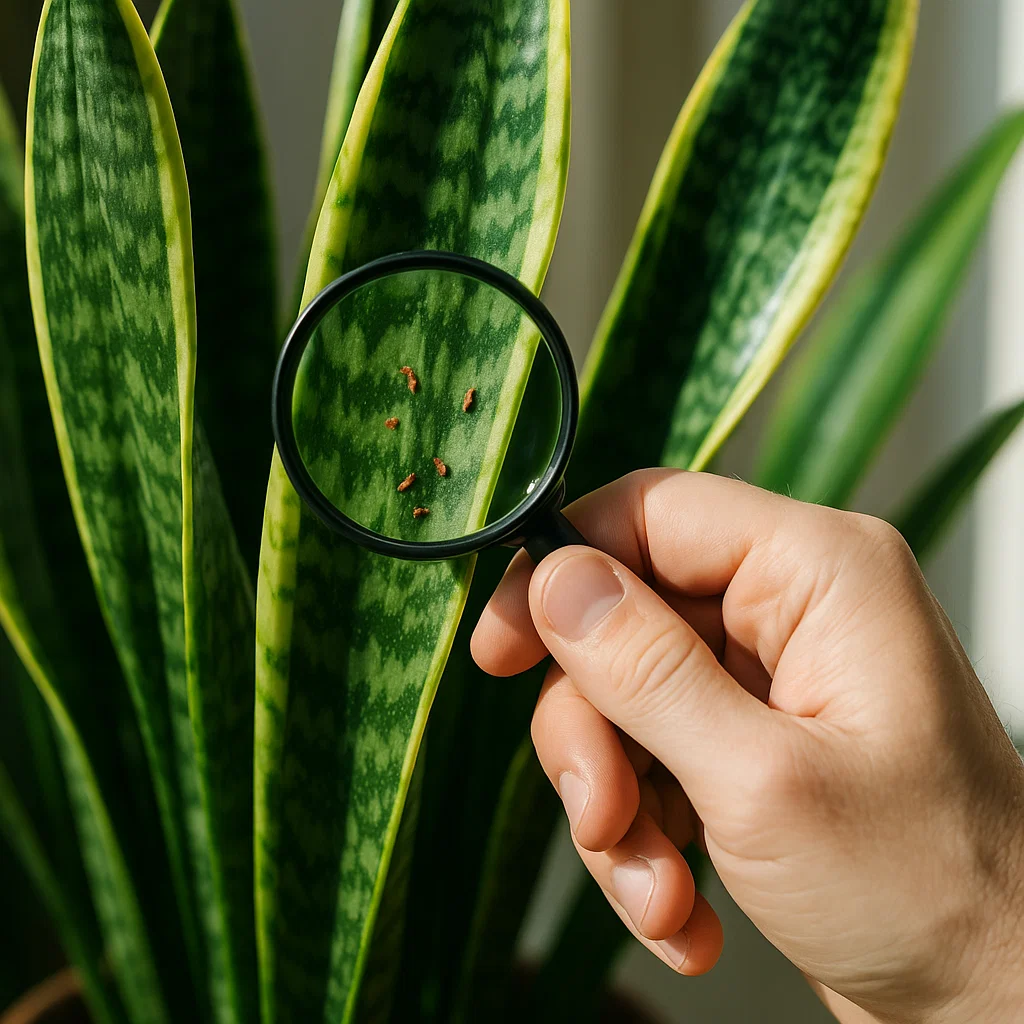
Although snake plants are relatively pest-resistant, they can sometimes attract mealybugs or spider mites. Regularly inspect the leaves for any signs of pests and remove them by wiping the leaves with a damp cloth or using insecticidal soap if necessary.
Why it works: Keeping pests at bay ensures your plant stays healthy and free from diseases that can stunt its growth.
9. Trim Dead or Damaged Leaves
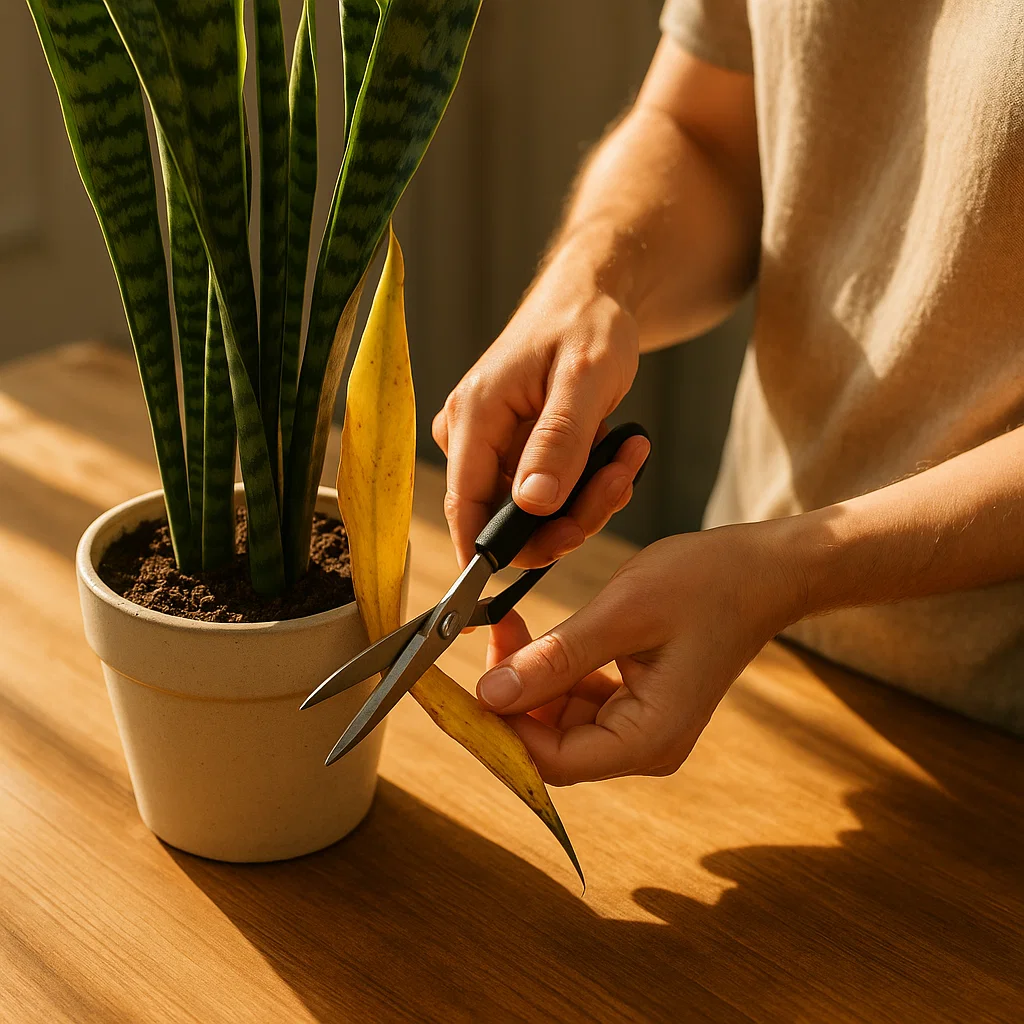
Remove any yellow or brown leaves by cutting them at the base. Trimming away damaged leaves helps the plant focus its energy on healthy growth and keeps your snake plant looking tidy.
Why it works: Regular pruning prevents the plant from wasting resources on unhealthy leaves, encouraging new, vibrant growth.
10. Allow for Natural Growth
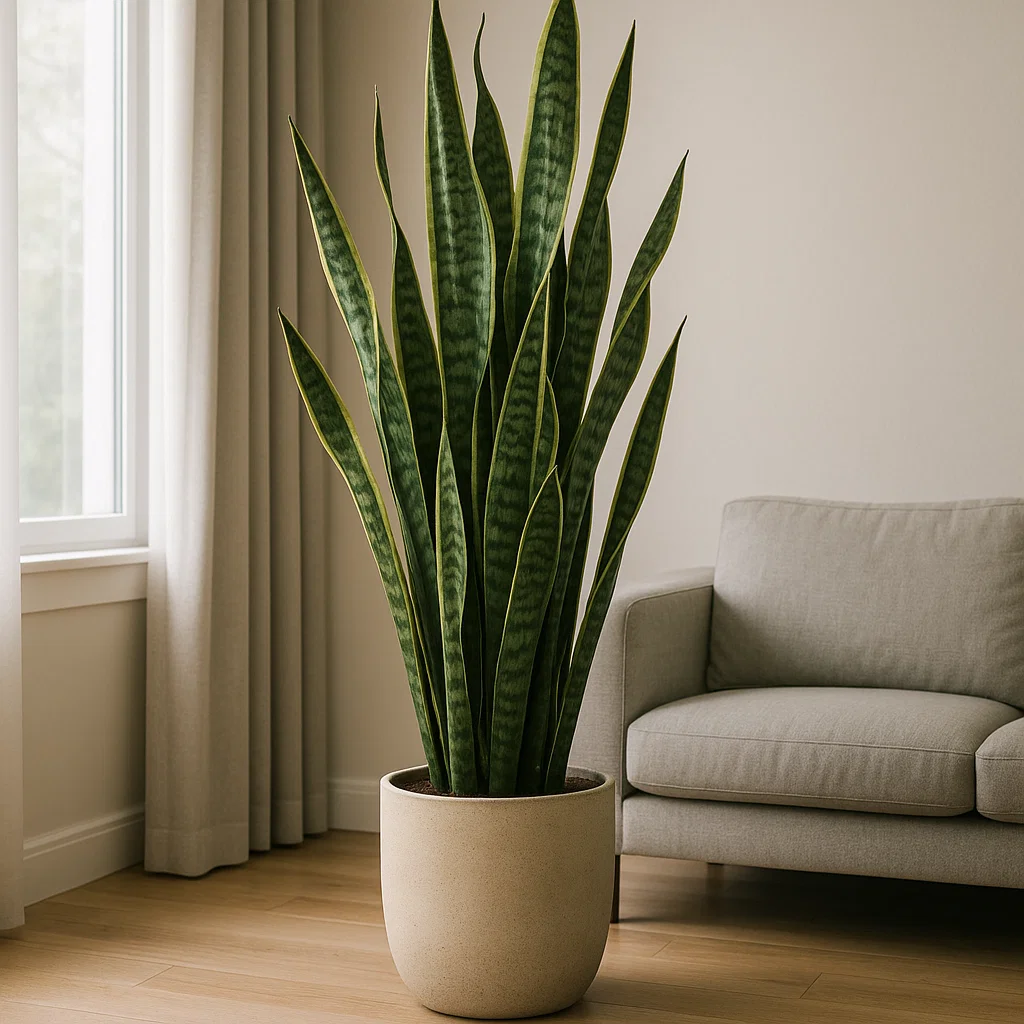
Snake plants naturally grow tall and upright. Avoid overcrowding them in small pots or trying to reshape them drastically. Let the plant grow at its own pace for the best results.
Why it works: Allowing your snake plant to grow naturally ensures it remains healthy and maintains its attractive, upright shape.
A Resilient and Low-Maintenance Plant

With these 10 beginner tips, your snake plant will thrive effortlessly. They are one of the most resilient houseplants, perfect for anyone new to gardening or looking for a low-maintenance plant. By following these simple steps, you’ll enjoy a healthy, vibrant snake plant for years to come.

